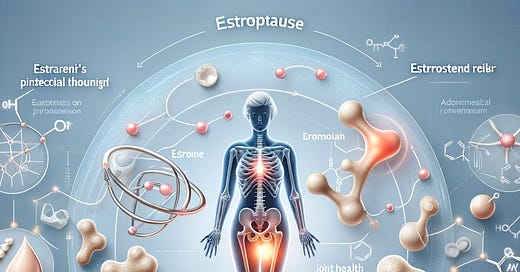Estrogen and Osteoarthritis Risk in Menopause
The Menopause-Osteoarthritis Link
Menopause marks a significant transition in a woman's life, not just hormonally but also in joint health. One of the pivotal changes during menopause is the decline in estrogen levels, a hormone intricately linked with the health of various tissues, including joint cartilage. This decline is associated with an increased risk of developing osteoarthritis (OA).
Estrogen's Protective Role in Cartilage
Estrogen plays a crucial role in maintaining cartilage health. It does so by binding to estrogen receptors (ERα and ERβ) present in the cartilage. Through these receptors, estrogen regulates the balance between the synthesis and degradation of cartilage. It controls the activity of enzymes involved in cartilage repair and degradation, such as matrix metalloproteinases (MMPs), and inhibits pro-inflammatory cytokines within joint tissues.
Impact of Estrogen Decline in Menopause
As estrogen levels drop during menopause, the protective mechanisms it offers to cartilage are diminished. This can lead to increased cartilage degradation, contributing to the development or progression of OA. The decrease in estrogen also impacts bone density, increasing the risk of joint damage. Additionally, the anti-inflammatory properties of estrogen are reduced, potentially leading to increased joint inflammation and pain.
The menopausal transition, with its associated decline in estrogen, poses an increased risk for OA development and progression in women. Understanding the role of estrogen in joint health opens avenues for targeted interventions to manage and potentially mitigate these risks. Hormone replacement therapy (HRT) remains one of the most important considerations women should explore with their gynecologists.




